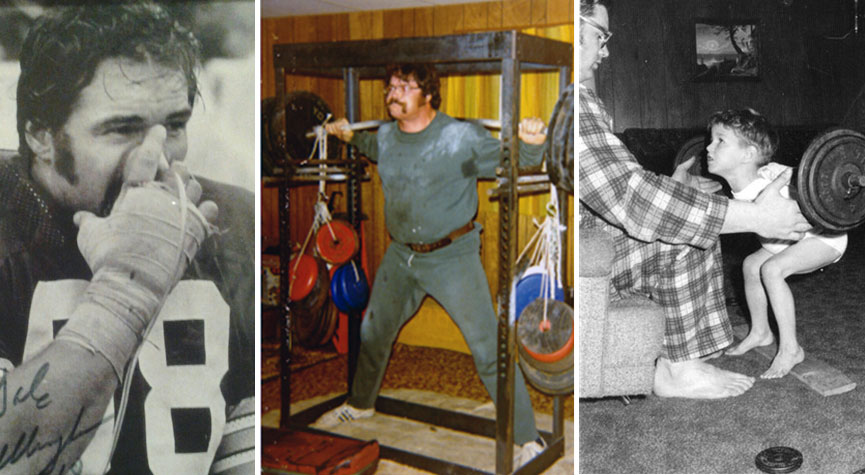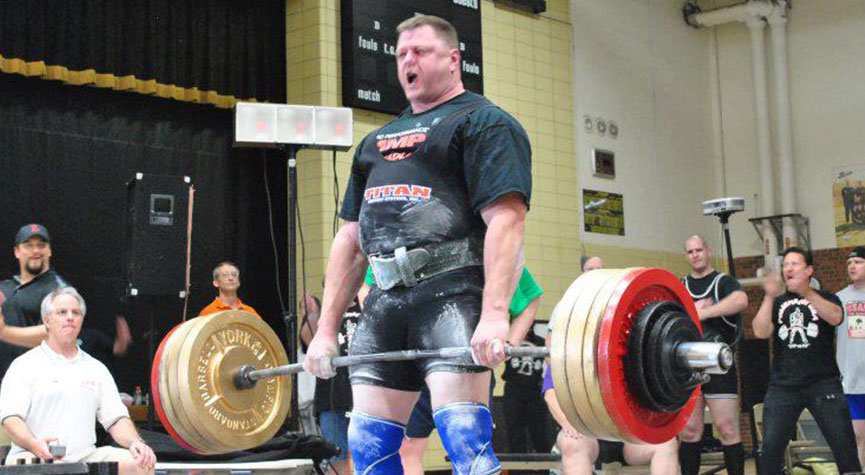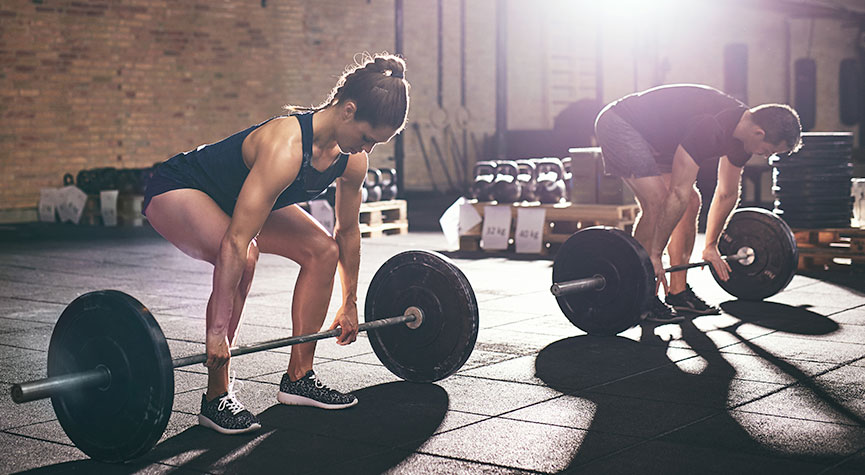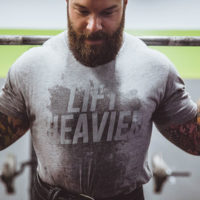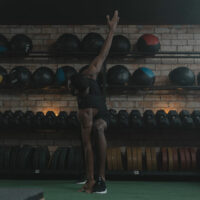Partial lifts may not be a common sight in traditional weight training, but they can offer significant benefits in overcoming plateaus. Renowned powerlifter Brad Gillingham is here to share why.
My training programs over the years have included a full diet of partial range of motion (PROM) lifts, especially in the deadlift. I have been pulling deadlifts in a power rack aka rack pulls since I was in junior high school. The power rack is the most versatile piece of equipment to adjust range of motion (ROM) as the pins can be inserted into different settings in the rack. Lifters can also train PROM deadlifts off training blocks, or by using wagon wheel pulls. Strongman competitions will often include PROM deadlift events using various implements like silver dollar deadlifts, truck tire deadlifts and various apparatuses to lift cars and trucks.
Where It All Began
I learned about PROM training from early childhood training sessions with my father. He developed this method of training during his Green Bay Packer Hall of Fame playing career. My grandfather built him a custom rack out of 4×4 timbers in the late 60’s. He eventually had a local machine shop build a heavier duty rack in 1970. I still lift out of that rack today… Routinely he would perform these heavy PROM movements at various pin heights in the squat, bench, and deadlift. Initially he developed his system to train heavy without spotters, and to rehab injuries. He would complete full ROM movements with lighter weights that he was comfortable with training alone, and then he would utilize his PROM system to maximize his loads. After football, he continued to train heavy this way the rest of his life. He would record these linear progression programs on the walls of our garage gym.
The Legends
Historically, legendary world class strength athletes like Bob Peoples, Don Cundy, and Don Reinhoudt utilized PROM deadlift training in their programs.
Peoples deadlifted 725 lbs. weighing just 181 lbs. in 1949. Peoples used a home-made power rack to pull from three different positions: just below the knee, mid knee, and just above the knee. He would also use another interesting method. He would dig a hole under the barbell and start his training cycle a few inches below lockout. Over the duration of his cycle, he would fill the hole in with dirt until he was performing a full range of motion deadlift. Brutal old school training at its best!
Bob Cundy, who was the first man to deadlift over 800lbs. in 1969, trained rack pulls from just below the knee. Whereas the legendary Don Reinhoudt, who was both IPF world powerlifting champion and 1979 World’s Strongest Man, would train his rack pulls above the knee.1
Pushing Through Your Sticking Point
This leads into the question as to what the most advantageous position is to train the PROM deadlift. There is a considerable amount of scientific research conducted on defining the sticking point of a lift. The sticking point is the point in which bar velocity slows down. In simple terms the sticking point in the deadlift is identified as being about 2 inches below the knee cap.
Incorporating the PROM deadlift will allow you to use more weight (supermaximal) in training than can be lifted from the floor. Training with supermaximal weight above and around the sticking point can be beneficial to maximize your deadlift strength.2
My many years of training rack pulls gave me lots of confidence going into competitions. I knew that if I could get the bar over my knees, I could always lock it out.
My Training Experience
During the peak of my competitive years, I liked to train with a variety of pin heights. I would start above the knee and work down 2 inches every other week. I would train full ROM pulls from the floor the weeks between rack pulls.
In modern day, I am still extremely addicted to lifting supermaximal weights. At times I will train rack pulls as part of a hybrid workout with full ROM deadlifts. Other times I will follow the rack pull with a heavy sandbag load. I typically slam a heavy slam ball prior to each lift to crank up the nervous system!
It’s extremely addicting for me to lift supermaximal weights. In my late 50’s I am still able to pull very heavy out of the rack. Whereas age and physical limitations have decreased my full range of motion deadlift.
Optimize Your Training
If you’re not training the PROM deadlift you need to start. Research indicates that PROM deadlifting is a viable way to blast through a plateau and maximize your strength. 1,2 Additionally, it can provide some variation to your current program. Lifting supermaximal weight is addicting! Good Luck and Stay Strong!
Want to get the most out of your training? Try myHMB.
myHMB has been clinically proven to improve recovery, build muscle and strength, and enhance aerobic capacity. Learn more.
References
- Gillingham B, DeBeliso M. The Efficacy of Partial Range of Motion deadlift Training: A Pilot Study. International Journal of Sports Science. 2022;12(1):14-22. Doi: 10.5923/j.sports.20221201.03. View Abstract >
- Gillingham B, Bishop A, Higa GK, Adams KJ, DeBeliso M. The relationship between partial and full range of motion deadlift 1-repetition maximum: A technical note. Journal of Strength and Conditioning Research. 2022;37(4):909-914. Doi:10.1519/jsc.0000000000004342. View Abstract >

